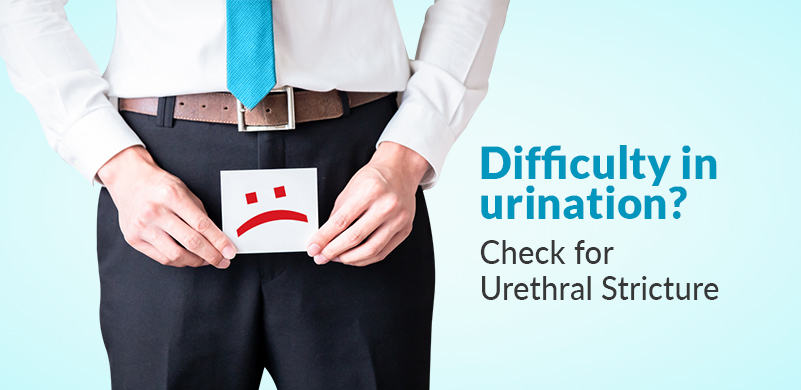© Copyright 2019. Regrow Biosciences Pvt Ltd. All Rights Reserved
Blog
© Copyright 2019. Regrow Biosciences Pvt Ltd. All Rights Reserved
Blog
Difficulty in urination? – Check for Urethral stricture
16th September 2022

Urethral stricture is defined as abnormal narrowing of the urethra lumen from its average physiologic diameter of 24-26 French (1 Fr unit = 0.33 mm). Due to these strictures, the person experiences difficulty in urination, as the urethra is responsible for carrying urine out of the body. Urethral strictures may be due to injury or a medical procedure (iatrogenic) such as catheter placement in the urethra, benign prostatic hyperplasia or prostate surgery, or infections such as sexually transmitted diseases (gonorrhea, AIDS, etc.)
1) A slow, frequent, painful urination.
2) Sometimes, it may cause bleeding
3) Over a while, cause recurrent UTIs
4) Hematuria
5) Pooling of urine in kidneys and kidney damage.
After experiencing symptoms, it is recommended to undergo the following diagnostic tests to confirm the urethral strictures –
1) X-rays (retrograde urethrogram) to assess the length and density of stricture.
2) Urine flow test to determine how urine flow is affected
3) Ultrasound to evaluate if an abnormal quantity of urine is left in the bladder after urination.
4) Cystoscopy to see the location and appearance of stricture.
Around 45% of urethral strictures are iatrogenic, 30% idiopathic (no cause known but most commonly a past neglected minor trauma), and 20% due to bacterial urethritis.
Treatment options for strictures are broadly classified as Endoscopic and open surgical procedures. Endoscopic procedures involve Bougienage and internal urethrotomy. Recurrent strictures are treated by open reconstructive surgical procedures such as
1) Stricture resection and end-to-end anastomosis
2) Urethroplasty with free graft
3) Urethroplasty with pedicled flap
4) Perineal urethrostomy
5) Bulboprostatic anastomosis
Amongst all procedures, urethroplasty is considered the gold standard to minimize the recurrence of strictures. Urethroplasty is of two types –
1) Excision urethroplasty
2) Graft urethroplasty
Urethroplasty is a highly specialized process requiring highly skilled professionals to perform, ensuring high success rates. Excision urethroplasty is employed for small strictures, and graft urethroplasty is more durable and minimizes the chances of recurrence.
Apart from urethroplasty, catheterization (a modern and simple procedure of inserting a catheter in the urethra to drain urine) and endoscopic urethrotomy (use of an optical device to clear the stricture) are also employed as treatment options.
Possible complications of open reconstruction
Open reconstructive surgeries pose certain complications such as –
1) Penile curvature, 5% to 20%
2) Impaired ejaculation, 25%
3) Impaired glans sensitivity, 15% (end-to-end anastomosis)
4) Fistula formation, 5% (flap urethroplasty)
5) Skin necrosis, 15% (flap urethroplasty)
Please discuss with your consultant urologist for the relevant procedures to your complaint.
Urethral stricture recurrence is most commonly defined as the failure to pass a cystoscope (typically 16–17 French or around 5-6mm) through the stricture without force. Strictures are recurrent in almost 20-25% of patients who underwent treatment with an average duration range for recurrence being 12-35 months. It was understood that factors like obesity, prior urethroplasty, and longer stricture were some of the factors that are responsible for recurrence.
| Stricture location | Surgical technique | Recurrence rate |
| Bulbar |
EPA BMG
Penile skin graft |
5-20% 12-19%
16-18% |
| Penile |
Multiple
BMG
Skin flap
|
16-27%
7-30%
12-14% |
| Meatal / Fossa Navicularis |
Meatotomy BMG
Skin flap |
2-15%
7-44%
4-17% |
Apart from treatment, some dietary recommendations prevent recurrences of strictures such as the intake of a healthy diet rich in fibers, vitamin C, antioxidants such as fruits and grains, intake of coconut water, fruit juices instead of excess consumption of caffeinated beverages, and physical activity such as kegel exercises could be very helpful in relieving the symptoms and also help in preventing recurrences of strictures.